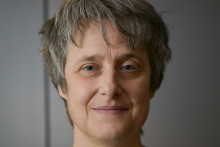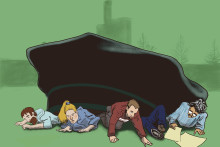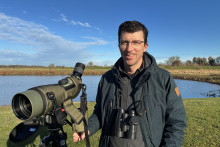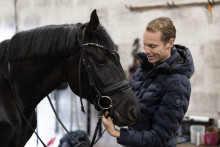‘The traditional ways to protect the coast involve hard structures, such as sea walls, but that doesn’t solve the problem sustainably,’ says Kathelijne Wijnberg, newly appointed professor of Coastal Systems and Nature-based Engineering at the Faculty of Engineering Technology. She believes that nature itself might be the answer to preventing dangerous erosion of the coastline.
‘More and more people are moving to the sea. Yet, a sedimentary coastline is by nature a mobile coastline and an increased erosion will keep happening. With hard structures, we might be able to protect settlements, but that might also mean that the beach disappears – and the local economy with it. So can we think of better solutions?’ asks the professor, immediately providing a possible answer. ‘Sediment is what you lack at an eroding coastline, but there are natural processes that bring sediment to the coast: waves and wind.’
Harvesting the wind
Wijnberg aims to understand how we could utilize natural ways of flood protection. How could we, so to speak, harvest the wind? ‘Sand is blown in, but because of our current infrastructure it is just removed or goes back to the sea. We could, for example, think of new architecture and urban planning to ensure that the sediment stays there. I mostly focus on sandy beaches in my work, and so I’m basically looking for ways of how we can build with sand.’
The majority of the Netherlands is protected against flooding by dunes – created by the wind. ‘Dunes change all the time, they are dynamic. If we understand how they behave and how to manage them, we could use this natural flood protection. However, first we need to understand where this natural approach works and what we need to monitor. We also can’t forget the social aspect. For instance, people clean beaches to keep them appealing, which means that all vegetation gets removed, making it hard for sediment to stay there. Or what if we find a way to stop erosion but the solution means that local fisherman can’t go fishing anymore? Then it’s not a solution anymore. We can’t look at the problem from only one perspective.’
‘There are other parts of being human than just work’
Including many perspectives is an important part of Professor Wijnberg’s approach – to research and to life. ‘There are other parts of being human than just work,’ she says. ‘I’m a physical geographer by training and I’ve focused on coastal change in the Netherlands, and did a postdoc in the US. But when I had my children, I decided to become a full-time mother and I quit science for a while. I’m happy I did it this way, because I’m not a person that can do things only “half way”. And I’m happy that the gap in my CV and publications didn’t stop me from getting to this point, from becoming a full professor.’
‘You need to see the beaches and waves’
‘Being a full professor feels like a recognition of what you do,’ continues the scientist. ‘It is a kind of a stamp. People start seeing you differently. In fact, some only see you because of the title, even though I don’t think I’ve changed in what I do. I still want to have close connection to my PhD students, to really be involved in the research, not just being a distant promoter. I still do field tests at the coast. If you want to work with natural processes, you need to go and see them. You need to visit the site, see the beach and the waves, not just look at models. Being there makes you humble and realistic in your goals.’
What are these goals? ‘My main drive is to have sustainable solutions that work in the long term,’ answers Wijnberg. ‘I know this might require major changes, and so I know it will be a slow process to implement any solutions I might develop, but I want my knowledge to be useful for people.’







